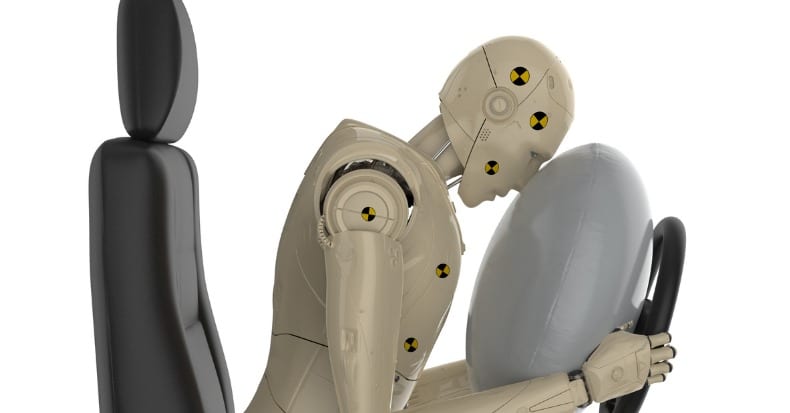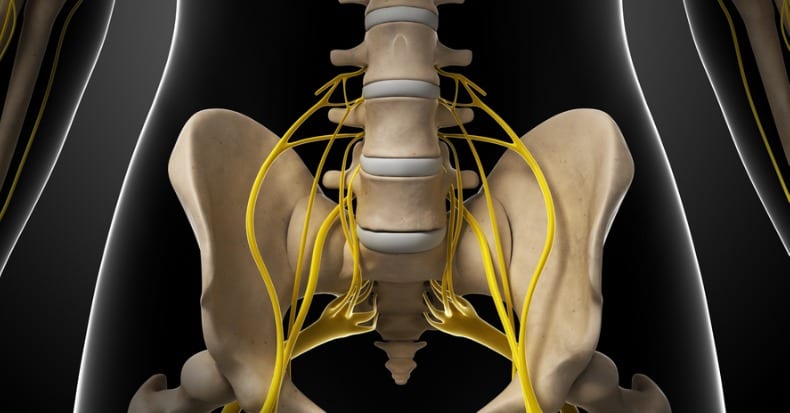Newest Articles
Carpal tunnel syndrome (CTS) is a disorder caused by compression of the median nerve that alters the nerve’s function (neuropathy), leading to pain and numbness/tingling (paresthesia) primarily on the palm-side of the wrist and hand. While factors like hormonal changes and repetitive motions are known to increase the risk for CTS, there might be a [..]
The hip is a very important region of the body, especially since our upright, weightbearing activities rely on a properly functioning hip joint. With the expansive growth of youth athletic programs, the incidence of hip-related injuries and the associated disability has markedly increased. But is there a difference between young male and young female hip [..]
Experts estimate that whiplash associated disorders (WAD) from motor vehicle collisions (MVCs) affect about 300 for every 100,000 people in the Western each year. Suffice it to say, that’s a lot of people!
Crash tests have demonstrated that the risk for whiplash is much greater when the backrest is leaned backward and/or when a headrest [..]
The omega-3 fatty acids DHA and EPA can reduce the risk for cardiovascular issues and even ease depressive symptoms, but can these healthy fats also help keep our minds sharp as we age?
In one study, researchers from the University of Pittsburgh School of Medicine monitored the diets of 260 healthy, cognitively normal older adults [..]
The sciatic nerve is made up of five nerve roots that exit the spine in the lower back (L4 to S3) and then merge into one nerve that travels through the buttock and into the leg. At the back of the knee, the nerve divides into two nerves, the tibial and common peroneal, that travel [..]
In addition to spinal manipulation, doctors of chiropractic often use other conservative therapies to reduce pain and improve function in patients with neck pain. When it comes to neck conditions involving herniated disks, radiating arm pain (“radiculopathy”), strains, facet syndromes or sprains, and myofascial pain, cervical traction is one such option.
As part of the [..]
Carpal tunnel syndrome (CTS) is the most common entrapment neuropathy, or pinched nerve, in the extremities. The condition is estimated to affect 3-6% of the population, often in both hands. Let’s discuss what causes CTS, its symptoms, how it’s diagnosed, and how it’s treated…
Causation: Carpal tunnel syndrome occurs when pressure is placed on the [..]
The shoulder is one of the largest and most complex joints in the body. It’s actually three joints—the AC or acromioclavicular joint (the collar bone/acromion of the shoulder blade joint), the glenohumeral joint (the ball-and-socket joint), and the scapulothoracic joint (the shoulder blade/rib cage “joint”)—all of which involve the scapula to some degree.
The rotator [..]
The cervical spine relies heavily on muscular support, particularly from the deep muscles in the front and back of the neck. Some experts estimate that up to 70% of the stability of the cervical spine arises from these deep neck muscles, particularly those in front of the spine. Studies have demonstrated that the rapid acceleration-deceleration [..]
Alzheimer’s disease (AD) is the #1 cause of dementia, representing an imminent threat to our senior population. It is one of mankind’s cruelest afflictions that causes patients lose their memory, personality, and eventually self-care skills. According to the Centers for Disease Control and Prevention (CDC), about 6 million people currently have AD with projections of [..]
In October 2016, a former model died from a stroke, and the media attributed her injury to neck manipulation.
Rebuttals to this manipulation/stroke claim were a combination of both offense and defense. An edited version of one such rebuttal is presented here:
Earlier this year the British Medical Journal published a study noting that medical [..]
Chiropractors are primary health care providers. This means that patients who seek chiropractic care do not need a referral from another health care provider. Patients may self-refer themselves for chiropractic assessment and treatment.
The large majority (93%) of patients who initially present themselves for chiropractic care do so for the complaints of spinal pain (1). [..]















